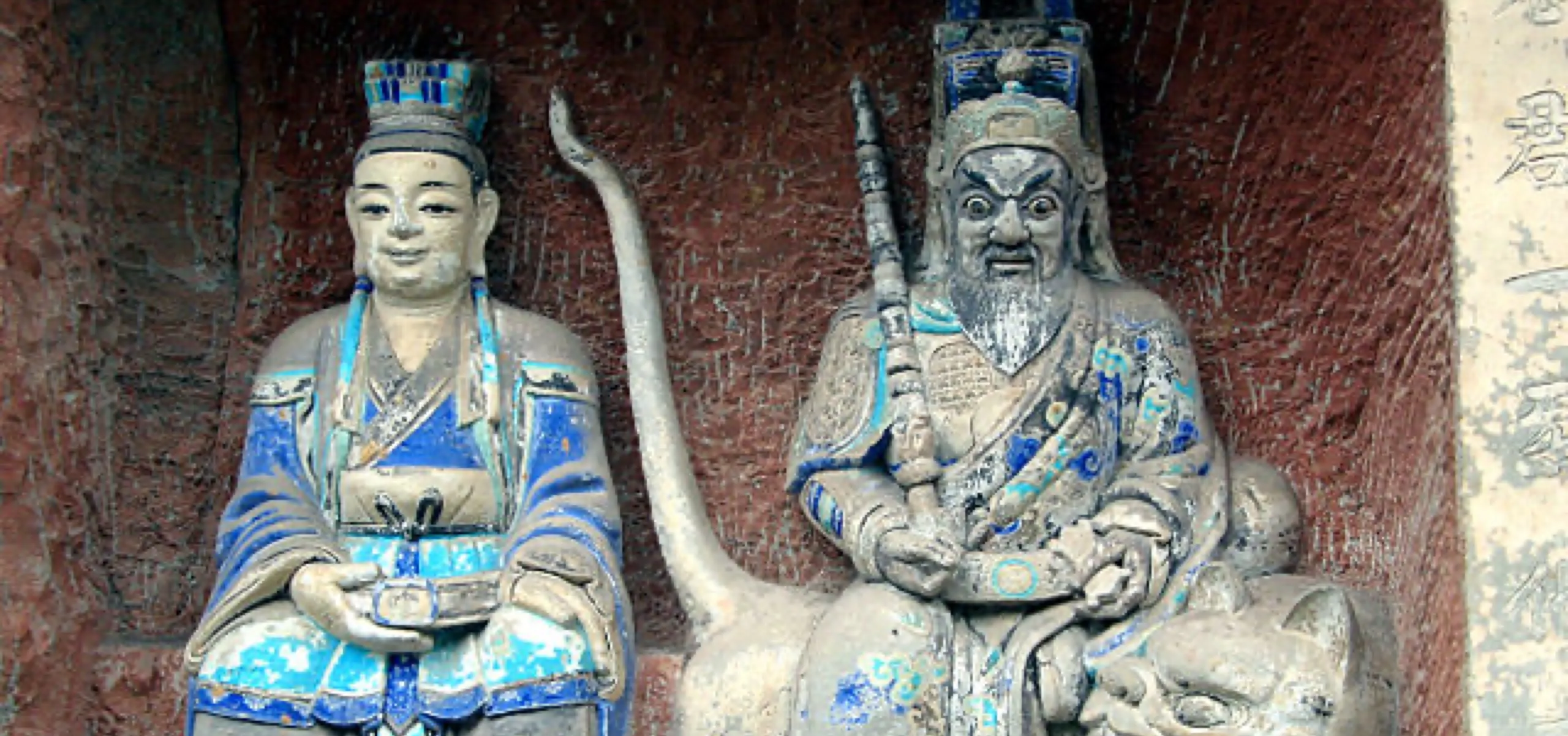As the Han empire crumbled and the Yellow Turban Rebellion sought to overthrow imperial rule, the “Way of the Five Pecks of Rice” quietly planted the roots of a durable Daoist movement
As natural disasters, epidemics, famines, sky-high taxes, corruption, and warlords ran rampant across territories of the crumbling Han empire in the late 2nd century, the peasants began to do what they do best—rebel.
Millions famously took up arms in the Yellow Turban Rebellion (黄巾军, named after the yellow kerchiefs followers wore during battles), led by the Daoist healer Zhang Jue (张角), and tried to violently topple the Han regime in 184. But while Zhang Jue’s attempt to implement Daoist governance by force of a “celestial revolution” is well-known in Chinese history, another Daoist movement around the same time was more successful and perhaps more influential. Indeed, just six years after Zhang Jue and his army were crushed in 185, an independent Daoist state was established in Han territory which would last 25 years and influence the future of Daoism to the present day.
This religious movement, known as the “Way of the Five Pecks of Rice (五斗米道)” or “Way of the Celestial Masters (天师道),” was led by Daoist healer Zhang Daoling (张道陵) and later his grandson Zhang Lu (张鲁), and its legacy remains through Daoist followers today who adhere to the “Way” set out by the Zhangs and those who claim direct lineage from these leaders. Zhang Meiliang, who lives in Taiwan, claims the title of 65th Celestial Master today, while Longhu Mountain in Jiangxi province remains a sacred place for followers of the Way of the Celestial Masters on the Chinese mainland.
The grandfather Zhang began preaching to the masses after he had a vision of Laozi, the reputed author of the central Daoist text, the Dao De Jing (《道德经》), atop Mount Crane Call in the State of Shu (present day Sichuan province) in 142 and assumed the title “Celestial Master (天师).” The Extensive Records of the Taiping Era (《太平广记》), a collection of historical stories written in the 10th century, recorded the moment: “A heavenly man descended, accompanied by a thousand chariots and ten thousand horsemen, in a golden carriage with a feather canopy…At times the man referred to himself as the Scribe Below the Pillar, sometimes he would call himself the Lad from the Eastern Sea.”
Zhang Daoling appealed to those suffering from the vicissitudes of the era. The Book of Later Han (《后汉书》), a historical record of the era compiled in the fifth century, recorded that in the summer of 171, “a severe drought broke out, and locusts appeared in seven provinces,” then in early 177 “there was an earthquake, and the sea overflowed.” But while the Yellow Turbans called for followers to overthrow the Han empire and its capital, the elder Zhang offered a more individualized, spiritual, and inward-looking set of solutions to commoners’ plight.
Zhang Daoling maintained that a person’s physical illness represented the outer manifestation of inner depravity, which he offered to heal. Zhang’s faith-healing technique called on adherents to write down a confession of their sins (potentially responsible for their sickness), then throw the paper into a river and solemnly promise to the gods that they would never transgress again. For these teachings, followers had to pay rice, silk, or household utensils. The amount of rice was set at five pecks; hence the movement’s other name.













